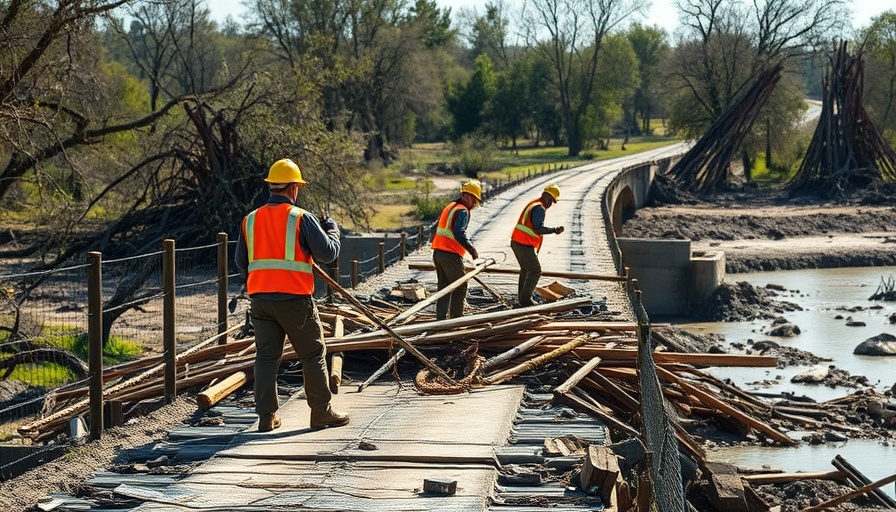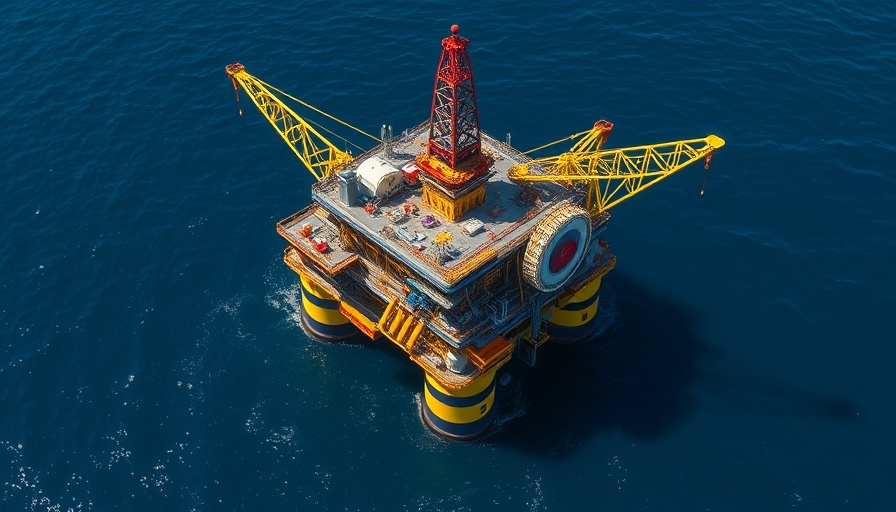
The Hidden Costs of Ignored Flood Risks
The recent catastrophic floods in Texas underscore a concerning trend across the country: insufficient risk mapping and the pitfalls of unchecked urban development. As climate change exacerbates flooding events, the inadequacy of current risk assessment methodologies seems alarmingly apparent. Building in at-risk areas places not only structures but communities at risk. Understanding these dynamics has never been more crucial for construction stakeholders, especially as they work towards both safety and efficiency.
Why Risk Mapping Matters More Than Ever
Risk mapping, or the identification of areas susceptible to flooding and other natural disasters, is essential for effective urban planning. When conducted accurately, these maps guide developers on where — and where not — to build. Unfortunately, many municipalities lag in updating these critical resources, often relying on outdated data that fails to account for new environmental realities. In light of the recent flooding, it’s clear that investment in modernizing risk mapping is not just advisable, it's essential.
Urban Development: The Double-Edged Sword
As cities expand and housing demands increase, developers are often tempted to overlook crucial environmental factors, leading to overdevelopment in flood-prone areas. It's a challenge that not only threatens community safety but can also result in financial ramifications for builders. As insurance costs skyrocket and recovery from disasters becomes ever more complex, it's imperative for stakeholders to bridge the gap between urban needs and environmental safeguards. After all, a thriving community should never come at the expense of its safety.
The Smart Approach: Integrating Technology and Strategy
Adopting a data-driven strategy for urban design can dramatically improve outcomes. Smart building technologies, which include real-time data augmentation, can help construction companies better understand environmental risks and make informed decisions about project locations. For instance, utilizing advanced simulation models can foresee water runoff patterns, guiding developments away from at-risk zones and helping secure better insurance and financing options.
A Call for Proactive Solutions
It’s time for construction companies to advocate for updated risk mapping. Not only does it enhance safety, but it also aligns with modern sustainable practices and regulatory standards. Securing partnerships with local governments to fund and conduct these essential assessments can pave the way for sustainable growth, ensuring that our cities aren’t just expanding, but thriving.
In conclusion, the revelations around Texas’s flooding serve as a wake-up call. By prioritizing accurate risk mapping and utilizing technology effectively, we can create safer environments for all — one project at a time. Let's ensure that the structures we build today enhance our communities tomorrow.
 Add Row
Add Row  Add
Add 




Write A Comment